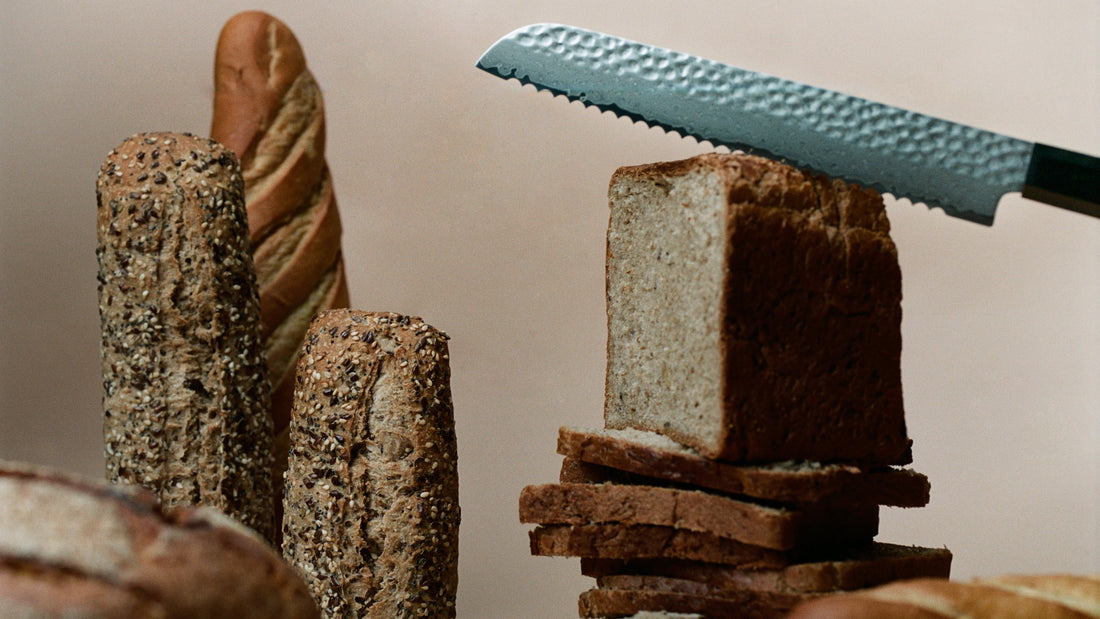
What Makes the Perfect Bread Knife? A Guide for Home Bakers
Share
If you’ve ever tried slicing into a fresh loaf of sourdough and ended up with a pile of crushed crumbs, you’re not alone. Bread is one of the simplest joys in the kitchen but only if you have the right tool for the job. That’s where a good bread knife comes in.
In this guide, we’ll break down exactly what makes the perfect bread knife, especially for home bakers who want beautiful slices, not frustration.
Why a Bread Knife Matters
Unlike soft produce or cooked meats, bread has one of the trickiest textures to cut: crusty on the outside, soft on the inside. Without the right knife, you’ll tear through the loaf instead of gliding cleanly across it.
A proper bread knife protects the crumb, preserves the shape, and makes every slice a pleasure, not a chore.
1. Serration Is Non-Negotiable
A bread knife needs deep, sharp serrations to saw cleanly through crust without putting pressure on the loaf’s interior. Look for a pointed, scalloped edge, not wavy or dull teeth. This ensures you’re cutting with the crust, not against it.
The SEKKIN Dune Bread Knife was designed with this in mind. Its Japanese AUS-10 core and precision-serrated edge glide through sourdough, baguettes, and even tomatoes with zero resistance.
2. Length Matters (More Than You Think)
A common mistake? Choosing a bread knife that’s too short. You want at least 8 inches of blade so you can slice in smooth and long strokes, not saw back and forth repeatedly.
Our Dune Bread Knife measures 8.3 inches, giving home bakers the flexibility to handle anything from a crusty boule to a banana loaf.
3. Balance and Comfort
If a knife feels awkward or unbalanced, you’re less likely to use it. A well-balanced bread knife should feel light in the hand but stable, with an ergonomic grip that doesn’t slip even when things get messy.
The SEKKIN handle is fiberglassed-reinforced and shaped to support long, confident strokes, perfect for weekend baking or everyday slicing.
4. Blade Quality and Durability
Many bread knives dull quickly or feel flimsy. Look for high-carbon steel or Japanese Damascus steel, which hold their edge and resist corrosion over time.
At SEKKIN, we use 67-layer Damascus steel with a hardened AUS-10 core. This gives the Dune both durability and beauty, a bread knife that doesn’t just perform, but lasts.
5. Design That Brings Joy
Yes, aesthetics matter. A knife that lives on your counter should be one you love to look at and one that fits the energy of your kitchen.
Our Dune Bread Knife is inspired by the Arabian desert, the soft curves of its dunes, the warmth of the landscape, and the timeless ritual of breaking bread across cultures.
Final Thoughts
The perfect bread knife doesn’t just slice well, it feels like an extension of your hand. For home bakers, it’s one of the most important tools in your kitchen.
If you're ready to upgrade your loaf game, meet the Dune Bread Knife by SEKKIN — crafted for crust, crumb, and everything in between.
